Waiting for “No Man”
ARLINGTON, VA.: Some theatres have a problem with succession: Founding leaders may hang around too long, even meddle in the affairs of their successors. But at the small, scrappy Virginia company WSC Avant Bard, artistic directors hang around long after they’ve stepped down—and the current A.D. is fine with it. In fact, Tom Prewitt recently directed not one but two of his predecessors in a May production of Harold Pinter’s No Man’s Land: Brian Hemmingsen, who led the theatre in the mid-1990s, and his successor, Christopher Henley, who ran it after Hemmingsen and only handed over the reins to Prewitt last fall.
Prewitt is an old hand at directing directors—he did it with Woolly Mammoth artistic director Howard Shalwitz in both 2006’s The Gigli Concert and 2004’s Lenny and Lou. And he says that despite their differing styles—“Brian likes to process and discuss, whereas Christopher would rather try new things in the course of rehearsing”—both of his predecessors “know how to flip that switch” from director to actor. “It never felt like there were too many cooks in the kitchen.”
Maybe not, but Pinter plays run on a subtext of power struggle, and having three directors in the room (along with cast members Bruce Alan Rauscher and Frank Britton) surely redounded to the play’s benefit. The production’s biggest coup, though, may have been getting the rights at all: A high-profile run is slated for Berkeley Repertory Theatre, en route to Broadway, this fall, with Ian McKellen and Patrick Stewart in the leads. Prewitt says he’s glad WSC got the chance to do No Man’s Land in an intimate, 85-seat house where you can “really get a sense of the actors sweating through those pauses.” Visit www.wscavantbard.org.
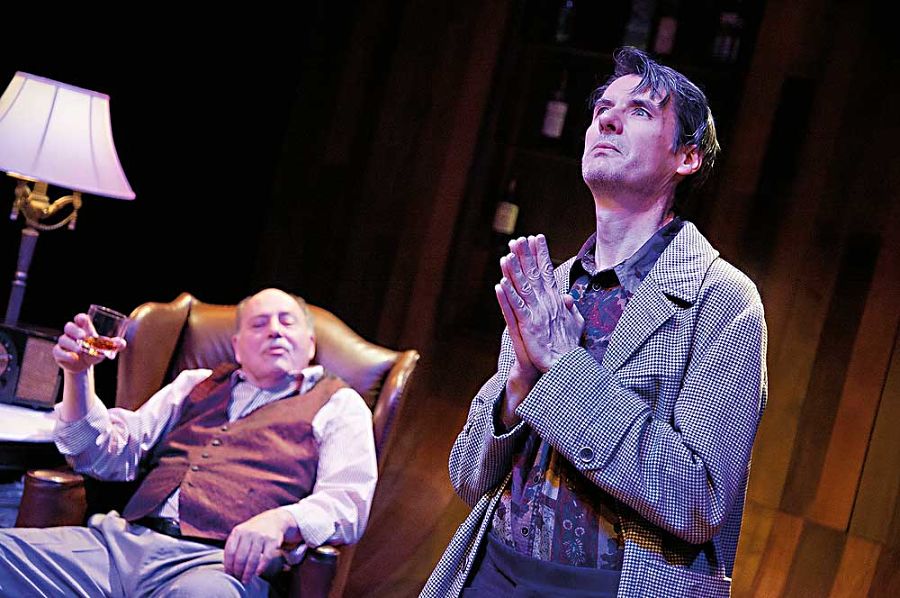
Theatre of the Air
BROOKLYN: You might say that St. Ann’s Warehouse, one of New York’s premier avant-garde venues, has frequently raised the roof—or at least shaken the rafters—with boundary-shattering work by the likes of the Wooster Group, Mabou Mines and Cynthia Hopkins. Now St. Ann’s will be installing an actual roof: With the help of a $25-million capital campaign ($14 million of which has been raised), the company will renovate the 18,000-square-foot Tobacco Warehouse, a beloved—and currently roofless—relic of New York City’s pre–Civil War past.
The space will be familiar to longtime St. Ann’s–goers, as its aged brick facade is directly across the street from the venue’s previous home, a former spice-milling warehouse that was demolished last year. St. Ann’s is currently housed in a warehouse on nearby Jay Street.
Plans for the company to take over the space were controversial with neighbors, who worried about the loss of public space in Brooklyn Bridge Park. Key to city approval was the inclusion of a 7,600-square-foot Triangle Garden, to be left open to the elements. Outdoor theatre—now there’s an idea that might catch on. Go to www.stannswarehouse.org.
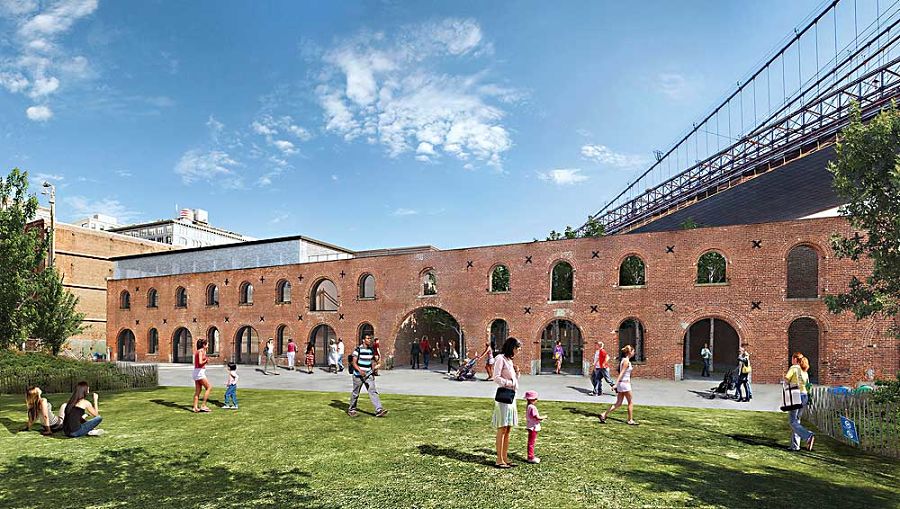
L.A. Storage Alliance
LOS ANGELES: What’s a nonprofit to do when its rent-free home of 30 years suddenly decides to start charging rent? In the case of LA Stage Alliance, the answer was not to panic or merely regroup but, in a sense, expand what they do. So when the membership organization, which represents around 500 theatres and companies in the greater Southland area, moved from its downtown L.A. spot to a 7,000-square-foot warehouse in nearby Atwater Village, just north of Griffith Park, the change of venue became an opportunity to address an unmet need of its constituents.
“Many people in the community had been looking for shared warehouse space,” says LA Stage CEO Terence McFarland, who estimates that between 80 and 100 companies will be able to use the new space for prop, set and costume storage. Member theatres, big or small, will gain the service at a discount. With a database called Rentalworks, used by local film- and TV-studio rental facilities, LA Stage will be able to catalog its collection for members.
There are also spaces available to LA Stage members for meetings and rehearsals, and some individuals have expressed interest in using LA Stage’s offices as a writing workspace. McFarland recalls a recent day of heartening confluence, when the Geffen Playhouse was offloading set items, another company was browsing through costumes, and yet another was checking out rehearsal space. Says McFarland, “We’re really interested in the things that can happen by people being in the same space.” That’s practically the definition of theatre. Go to www.lastagealliance.com.
Mass Audiences
GREAT BARRINGTON, MASS.: Three New York City companies will trek to Mass Live Arts this summer for its inaugural summer festival season, to be held July 18–Aug. 3 at the Daniel Arts Center. The festival, cooked up by Boston-bred, New York–based artist Ilan Bachrach, will present existing works—Half Straddle’s Chekhov riff Seagull (Thinking of you) and Radiohole’s messy multimedia romp Inflatable Frankenstein—as well as seed new ones. Among the latter is a development residency and work-in-progress showing of a new work by Half Straddle’s artistic director, Tina Satter, in collaboration with Richard Maxwell’s New York City Players, titled Mona’s House of Dance. As Bachrach puts it, other contemporary art forms have Berkshires berths: Dance has Jacob’s Pillow, visual art has Mass MoCA. Why not experimental theatre? “How is it that Radiohole,” Bachrach wonders, “who have been around for 15 years, who are redefining live performance and using technology in ways no one ever has, have never been seen in Massachusetts?” Now they can check that box. Go to www.masslivearts.org.
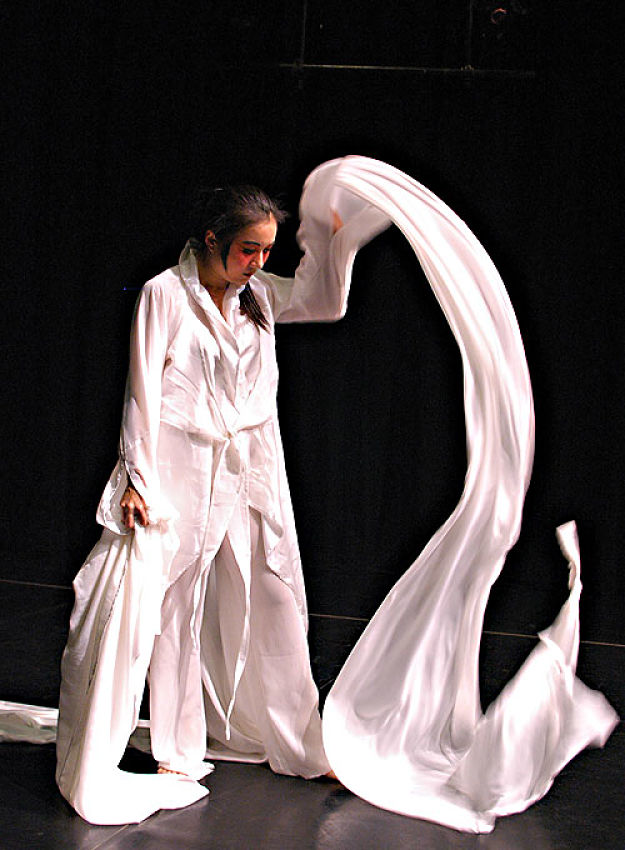
From Congo to Bhangra
SAN FRANCISCO: For two weekends in August, Bay Area audiences will get a multidisciplinary world tour without leaving town thanks to Performing Diaspora 2013, a festival staged by CounterPULSE. In the first weekend (Aug. 15–18), Byb Chanel Bibene remembers the Congolese civil war through dance, Jia Wu filters Medea through Chinese theatre and dance, and Joti Singh commemorates the Gadar Party’s fight for Indian independence. Weekend two (Aug. 22–25) has Jewlia Eisenberg exploring the lives of Italian antifascist intellectuals through sound and cartography; Muisi-kongo Malonga, with her first solo piece, about the medieval Congolese visionary Kimpa Vita; and Nava Dance Theatre linking the work of fifth-century Indian poet Kalidasa to contemporary themes. These artists are documenting their creative journeys through a blog and social media platforms; find them via www.counterpulse.org.
Data’s It
DALLAS: The new National Center for Arts Research (NCAR) may make its home at Southern Methodist University, but, says Zannie Voss, NCAR’s director, the center is “not a purely academic exercise. We hope it will act as a catalyst for the sustainability of national arts programs.” Bringing together data from as many as 50 different sources on some 45,000 arts organizations—including the Cultural Data Project, the National Endowment for the Arts, TRG Arts and Theatre Communications Group (the publisher of American Theatre)—NCAR plans to report on trends in organizational health, weighing all the factors that make a company successful (or not), and to use better data analysis to help to reverse negative trends and learn from positive ones. As Voss summarizes, “What is it that we don’t know that could help us?”
The work of NCAR’s small staff—in addition to Voss, three researchers and an associate director—will be shared online as soon as this coming fall, and Voss says that the center plans to unveil an online dashboard into which organizations can plug their data and assess their health. One surprising data point: “Not every arts discipline has as much publicly available information as theatre does. Theatre is pretty far ahead of the game.” Honestly, that’s not something we hear every day. Go to blog.smu.edu/artsresearch.

Fish Eyes
NEW YORK CITY: “These aren’t plays, and we don’t do play readings,” insists Dan Bianchi of his work with RadioTheatre, now amid its fifth annual H.P. Lovecraft Festival, running through July 6 at Under St. Marks. Instead, Bianchi’s original adaptations use sound design and actors’ voices in an approach he says is closer to that of modern-day film soundtracks than to quaint, old-time radio theatre.
Lovecraft’s creepy-crawly horror/sci-fi stories, originally written in the 1930s, seem ideally suited to all-aural presentations, because, as Bianchi puts it, “Once you show the monsters, it’s kind of cheesy, no matter how many CGI affects you can use.” That’s especially true of the festival’s second offering, The Shadow Over Innsmouth, in which a young traveler stumbles upon a village where the residents have toad faces and fish eyes.
Visually speaking, then, Bianchi’s company strives to get out of the way of the text: “We dress in black, like we’re putting on a concert—like we’re playing a Beethoven quintet. We come onstage and we have our instruments, and we make the audience imagine things in their own mind.” Go to www.radiotheatrenyc.com.
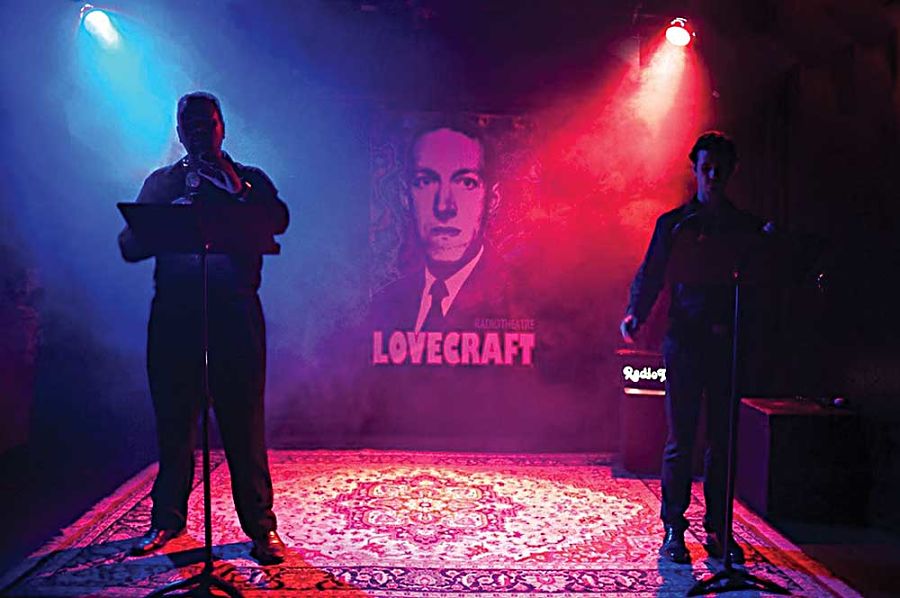
Reasons to Be Festive
ST. LOUIS: The characters in Neil LaBute’s plays aren’t very nice to each other, but LaBute himself has a reputation for generosity and all-around menschy-ness. Case in point: William Roth, founder and producing director of St. Louis Actors’ Studio, reached out to the playwright when his theatre was staging The Shape of Things, and the two began an e-mail correspondence. Not long after, Roth sought the playwright’s help with an anthology evening of his short plays, Just Desserts. Then Roth made the Big Ask.
“He came to me with this idea of a short play festival named after myself,” says LaBute. “It makes you feel both proud and silly, but if it helps draw in writers and/or audience, I’m willing to do it. I’m a crusader for theatre, wherever it might be.”
Hence the LaBute New Theatre Festival, July 5–28, which will include The Possible, a new LaBute one-act written expressly for the festival, in rotation with eight other plays chosen from open submissions. Five finalists from a separate high school playwriting category will have their work read July 5–6. LaBute describes The Possible as “a little love story between two women. I haven’t written a lot of material strictly for actresses, so I created something that is of interest to me—a relationship study—but also something fresh and sexy and fun for the actors to play. That’s the hope, anyway.”
The LaBute name seems to have encouraged like-minded writers. Says Roth, who chose the eight plays from around 250 submissions, “One or two have some pretty adult situations, and there’s some nudity.” His theatre, Roth continues, is “less about the pomp and circumstance and more about the relationship between audience and actors, and Neil’s work lends itself to that.” Go to www.stlas.org.
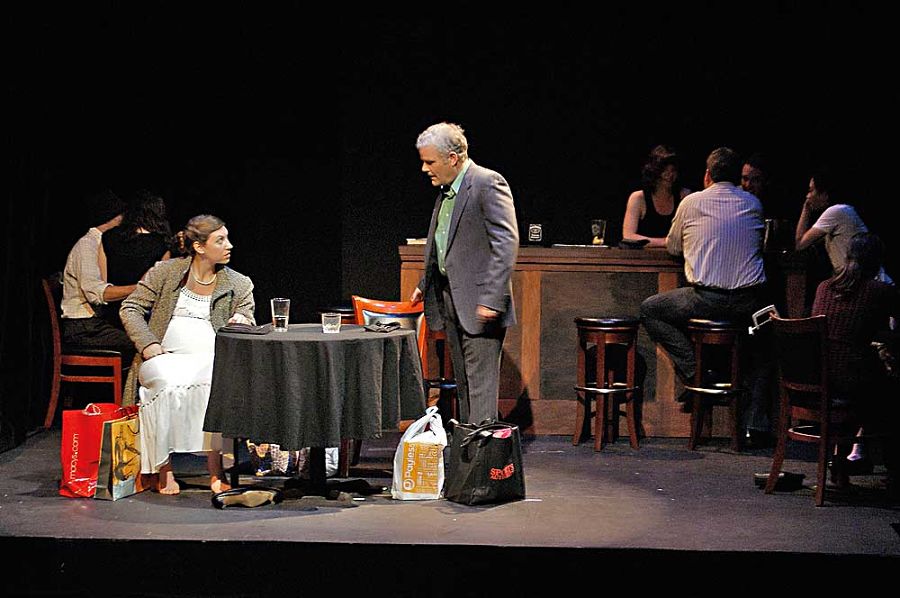
Bronx Revisited
NEW YORK CITY: By day, Michael Mejias works as a Latino literary scout at Writers House, the high-powered agency that represents such bestselling authors as Neil Gaiman and Stephanie Meyer. By night, he’s the playwright of Ghetto Babylon, a new play based in part on his own adolescence in the South Bronx, which plays at 59E59 Aug. 1–18. He’d been a frequently produced playwright in the 1990s but, as he puts it, “someone took the needle off the record, and someone else was the darling of downtown.”
After building his career in publishing, Mejias began to revisit playwriting in the past few years, and dusted off Ghetto Babylon, thinking, “I never got this right.” The play, about baseball, bullying and coming-of-age, is directed by Gregory Simmons, and was developed in readings with Puerto Rican Traveling Theatre, Repertorio Español and the Arizona Theatre Company. While busy producing the show with the Queens-based theatre company the Dramatic Question Theatre, Mejias isn’t planning any break from the day job. “I’ll sleep in September,” he quips. Go to www.59e59.org.
Truckload of Comedy
CHICAGO: When the Chicago Shakespeare in the Parks program presents its sophomore effort, a streamlined The Comedy of Errors, July 25–Aug. 25, it promises to be a moving experience. That’s because the play itself, produced by Chicago Shakespeare Theater, will roll around on a unique truck that unfolds into a stage, and will take the show from community to community for a total of 26 performances in 18 neighborhood parks. It’s an itinerant approach that recalls the Mobile Unit once run by Joseph Papp at the New York Shakespeare Festival (a project recently revived in New York City by current Public Theater artistic director Oskar Eustis—sans souped-up truck.)
With the support of Chicago mayor Rahm Emanuel and the city’s “Night Out in the Parks” initiative, Chicago Shakes will kick off its Comedy tour in its own backyard, Gateway Park at Navy Pier, on July 25. Visit www.chicagoshakes.com
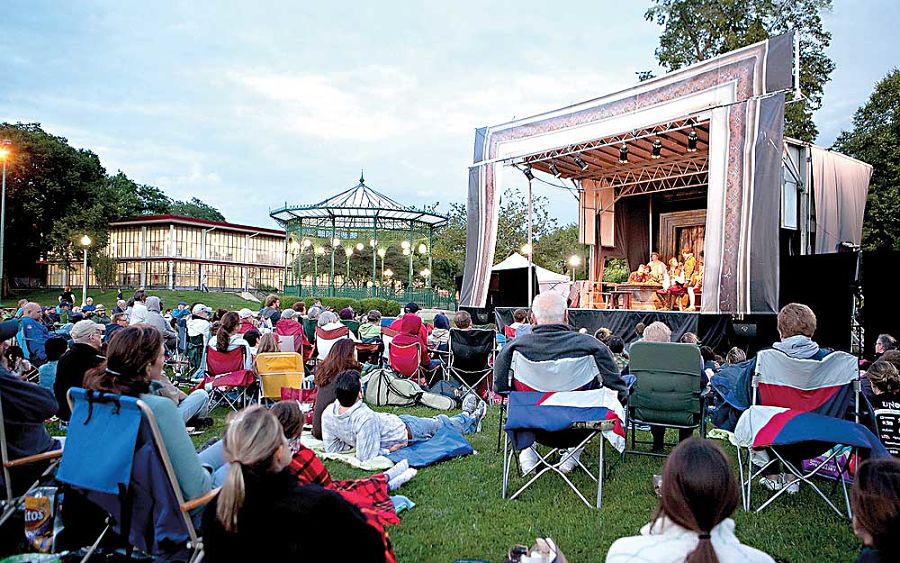
Go West, Young Scripts
TELLURIDE, COLO.: You didn’t know he writes, too? D’oh! It’s true: Dan Castellaneta, best known as the voice of Homer Simpson, is half of a comedy writing and performing duo with wife Deb Lacusta; together they’ve penned episodes of “The Simpsons” and created their own radio show in Chicago. The couple’s latest theatrical collaboration, The Banana Tree—a comedy about a convenience-store employee in Reno, Nev.—will be seen at this summer’s Telluride Playwrights Festival in Colorado. The staged reading will be directed by Chad Rabinovitz of Indiana’s Bloomington Playwrights Project, which for the first time is partnering with the seven-year-old festival and will produce the mainstage offerings this fall after their Colorado sojourn. Rabinovitz was the one who suggested the festival stage a new play by Calgary-based scribe Arun Lakra, Sequence, a science/mystery play. Its U.S. debut will be directed at Telluride by Sasha Sullivan.
Held at the Historic Sheridan Opera House July 23–28, the festival’s public events (which take place after a weeklong workshop for the participants) also include informal readings of Chatting with the Tea Party by Rich Orloff and Me Rich, You Learn! (a play with a stand-up comedy vibe) by Zachary Steel and Adam Carpenter, both of which came to the festival via the open submission process.
According to artistic director Jennie Franks, who founded the festival through her company Sparky Productions in 2006, what sets this play-development retreat apart from others is the intimacy and beauty of its setting. “Telluride is a magical place. I tell everyone who comes here that it will change you,” declares Franks, who has lived there for two decades. The town’s audience is arts-friendly (not for nothing, it’s the home of a major film festival) but not, she says, necessarily a sophisticated theatregoing crowd. According to Franks, that leads to unvarnished and “from the heart” opinions at informal talkbacks after the shows. Learn more: www.playwrightsfestival.org.
Kids’ “Kong”
NEW YORK CITY: “People know there’s something they should get mad about—they’re just not sure what it is,” says producer Randy Weiner. He’s talking about King Kong, the musical he’s co-written with director Alfred Preisser for New York’s annual SummerStage, an outdoor performance festival held in several city parks through Aug. 29.
Since Weiner may be best known as a producer of the immersive, sensual stage event Sleep No More by Britain’s Punchdrunk (see page 30) and Preisser holds the reins of the Classical Theatre of Harlem, people are surprised, they say, to learn that their Kong is a fairly traditional musical-theatre piece, and family-friendly.
So what’s to get mad about? For one thing, this Kong is not the racially tinged colonialist tale you thought you knew, of a giant ape harvested from Africa for Western amusement. The racial politics are right on the surface in the new version, a story of Jewish record executives venturing into the South Bronx in the late 1970s to find an exotic artist named M.C. Kong, whose exciting new music is ripe to be imported and exploited.
“It’s going to feel very much like vaudeville or musical comedy, but in the midst of it you’re hearing some of the beginnings of hip-hop,” explains Weiner.
Chimes in Preisser: “All of the retrograde images we associate with the King Kong story are turned upside down.” No word on what else may be overturned—cars? buildings?—in the bargain. Visit www.summerstage.org.


